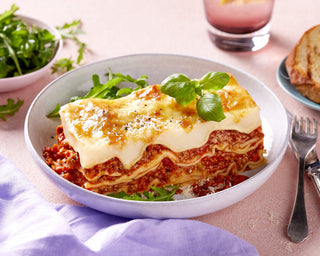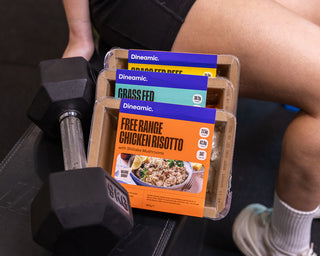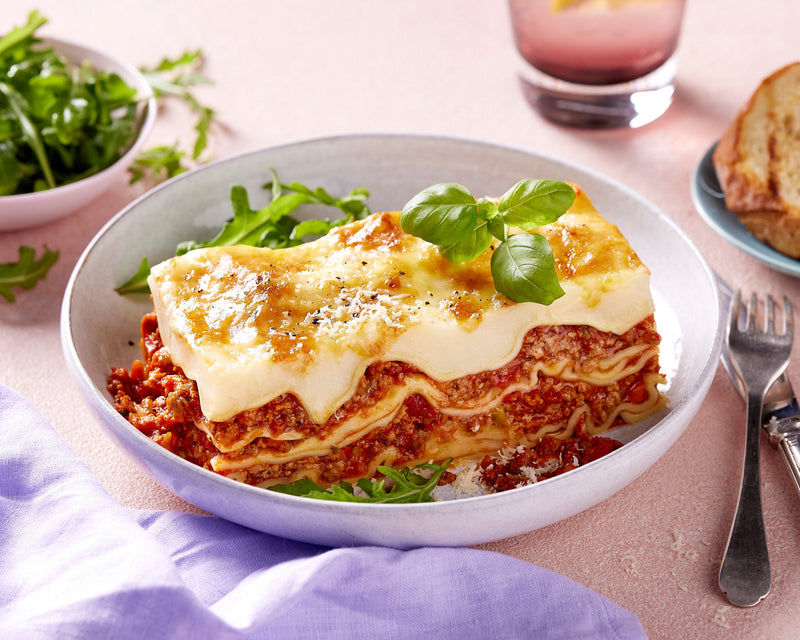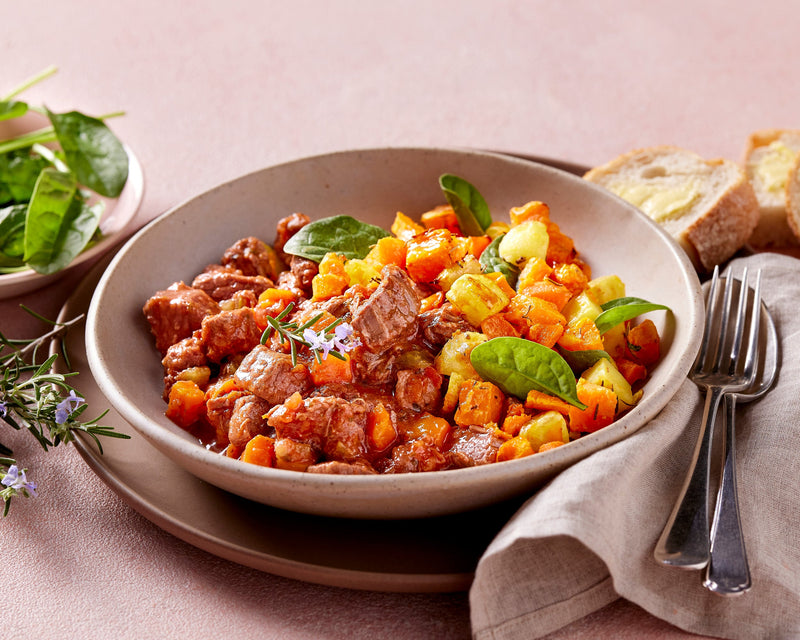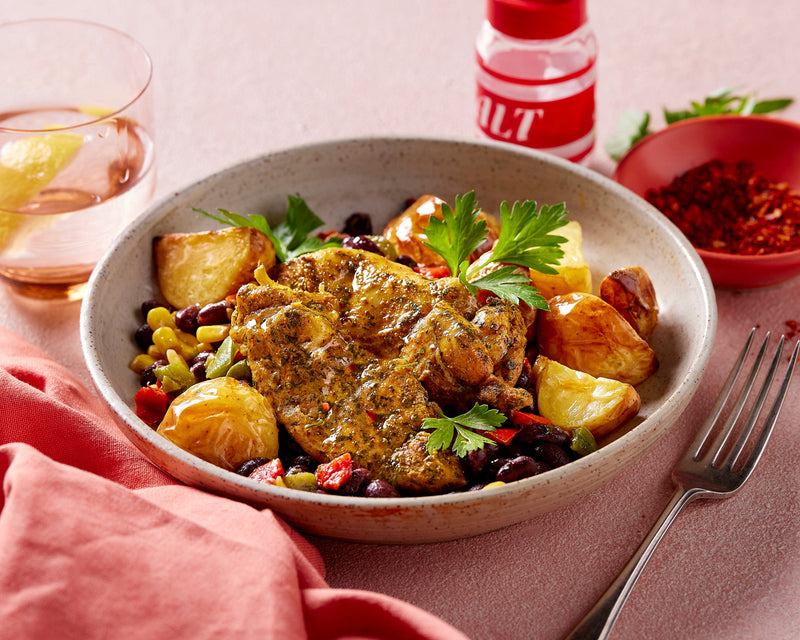Salt or sodium chloride, has over 14,000 uses1 but to everyday people it’s a seasoning that takes French fries to the next level or a food additive that cures meats to bring you salami or bacon.
With all the information out there and the endless studies available, it can get tricky to navigate the do’s and don’ts when it comes to salt. That’s why we’ve taken a look at salt as a public health concern, the controversial ‘salt debate’ and tips on how to understand and manage your salt intake. Yes, there’s some sciencey stuff, but some simple tips and loads of interesting info.
Salt vs Sodium
The first point of confusion that we often see is the difference between salt and sodium and how to calculate one compared to the other.
Salt is a mineral made up of sodium chloride, so sodium is about 40% of salt but the rest is chloride. Given that the recommended intake for many people is 1tsp of salt, this is a good rule of thumb to calculating one compared to the other:

Recommended Intake
The suggested dietary target for Australian adults is 2000mg of sodium per day (that’s just under 1 teaspoon of salt) to prevent the onset of chronic disease. Without surprise, this was implemented because of emerging evidence linking consumption of sodium to chronic disease2. It also makes it consistent with international recommendations, realistic with the current food supply and an adequate amount to meet nutritional requirement but still reduce current intakes.
Despite these targets, Australians consume almost double the recommendations at approximately 9g of salt daily3 and even then, this may still be an underestimation as salt added ‘at the table’ or ‘discretionary’ salt could not be accounted for in the survey.
Most of us are aware of the adverse health effects associated with a high salt diet but many of us underestimate the main dietary sources of salt and are unable to identify the recommended daily intake4 .
Salt in the public eye
Excess salt intake has been linked to adverse health effects that affect more than 19,077 people through reduced blood supply in the coronary arteries3. The World Health Organisation (WHO) Member states (including Australia and New Zealand) have implemented initiatives to reduce the global populations intake by 30% by 2025 with it projected as one of the most cost-effective measures to improve population health outcomes, with WHO estimating the prevention of an estimated 2.5 million deaths worldwide each year5.
Before you start thinking it’s as easy as putting down that salt shaker - there’s a little more to it as research indicates that 75% of salt consumed is already present in everyday manufactured foods6. Dietary sources of sodium can come from those already high in salt (e.g. processed meats, instant noodles), those consumed frequently in large amounts (e.g. bread and cereal products), those naturally containing sodium (e.g. milk, shellfish) or in forms such as sodium glutamate (a common additive).
Good news is, salt reduction movements are already in place from the Bread and Breakfast Cereals industry and the Meat industry7. However most initiatives are still voluntary that have not been formally evaluated for their effectiveness. As for the other sectors in the food industry, data from the George Institute for Global Health’s ‘Unpack the Salt’ campaign, found a disappointing result for the ready-made meals industry with no apparent change in the salt content for the past 7 years.
As a ready-made meal company ourselves you may be thinking why on earth would we be writing about this given that our industry has copped so much flak in the past for its ‘high salt’ content? Well we’ve made a commitment to maintain healthy sodium levels in our meals from the beginning, with a focus of keeping our meals in line with Australian Dietary Guidelines which recommend <380mg/100g of sodium or <1g/100g of salt.
For our friends in the same industry, there are good incentives to join us. Sensory studies involving Chilli Con Carne, have found that consumers were unable to detect any difference in taste after a 40% reduction in salt, and similar results were also seen in a study using salt-water solutions and vegetable soup samples where a reduction of up to 48% could be achieved without affecting the consumers acceptability score and intent to purchase8,9.
The Great Salt Debate
Salt, just like sugar or saturated fat has and is still a controversial topic. Some say yes we must reduce it! Some argue there’s no real difference if you do. Despite the myriad of evidence that suggests reducing salt intake can lead to beneficial health effects and economic advantages. Scientists and some in the academic world have highlighted inconsistencies found in some observational studies. One of the main reasons why they may be against the reduction is that low levels of salt at extreme levels may increase risk of cardiovascular morbidity and mortality10. In fact, the Science Journal has joined in to call it the ‘longest, most bitter and surrealistic discussion in medicine’11.
To understand where this is stemming from let’s take a look at the history so far:
- 4500 years ago: Chinese Yellow Emperor made the first association 'if too much salt is used for food, the pulse hardens'12
- 18th century: Stephan Hales suggested that salt influences blood volume and water content implying that it may lead to changes in arterial pressure as well.
- 1980: A two phase trial using non- pharmacological interventions were tested on its affect to reduce blood pressure. They found that for every 1000mg sodium consumed there was a 17% risk of increased pressure om the arteries13
-
2014: (This was probably the turning point) A review14,15 concluded that there was no evidence that sodium intake less than 2900mg or greater than 3400mg increased abnormal heart and blood vessel functioning in the general population. So basically,
- High BP + High Sodium = ↑ risk of death
- Normal BP + moderate to high sodium = no effect
- Normal BP + low sodium = ↑ risk of death
Arguments why salt may not be an issue:
- The basic molecular and cellular mechanisms underlying the effect of salt on blood pressure is not well understood. Sceptics argue that high blood pressure increases the risk of cardiovascular disease but it is not known whether a high salt diet directly leads to hypertension. Of the 64 studies conducted between 1978 and 2014, 27% were randomized controlled trials and of the 68 studies within found that 50% showed inconclusive evidence of an effect16.
- Prospective cohort studies have also shown a higher risk of CVD and death for low sodium intake compared to moderate intake17.
Arguments why salt is an issue:
- United Nations and the WHO (the big dogs) have thoroughly reviewed5 all evidence with experts from various continents. Both groups concluded that sodium is linked to hypertension and moderate salt intake (5g per day) is feasible, equitable and effective.
- Those that are sceptical of a change largely base their reasons on flawed studies with insufficient statistical power (small samples) and ultimately drew conclusions from data that had a lower food intake anyway? E.g. when people are sick, they tend to eat less and therefore less sodium, those that were sick were included in the study so it’s hard to determine if less sodium causes poor health or if poor health causes less sodium?
- Critics have argued that the lowering of salt by 1 tsp of salt as established in the INTERSALT study18 saw only minimal difference in average blood pressure. However what may be a small clinical impact can have a 'great impact when applied to a whole population' how does a 4% decrease in coronary mortality, 6% in stroke mortality and 3% in all deaths sound? Pretty good if you ask us!
Okay, enough sciencey stuff for now, what can we do in everyday life to change our salty habits?
- First things first, know how to convert sodium (mg) to salt: Multiply sodium by 2.5 then divide by 1000!
- Use herbs, spices and vinegar for added flavour instead of salt.
- Look for meals with less than 400mg per 100g (Thai Green Chicken Curry with Broccoli, Cauliflower & Rice) or 120mg per 100g for best options (Moroccan Lamb with Couscous and Soy and Ginger Beef with Noodles)
- Remember that using white, pink, black, red, Himalayan, Celtic or Hawaiian salt is mostly for the flavour profile or the type of cooking you’re doing and less to do with the nutritional benefits because you’re using such a small amount, although TBH it might be hard to do unless comparing them side by side.
- Go for fresh or frozen instead of canned whenever possible. If that’s not possible, rinse canned veg/beans/lentils beforehand to wash away excess salt.
- Check the amount of salt per 100g when buying food, or cook from scratch and use fresh seasonal produce so you can moderate the amount of salt you’re adding in.
- For the athletes out there, sodium lost through sweat depends on several factors, in general, it is best to begin training in fluid balance through developing a plan. If fluid loss is high, sodium replacement may be required (either through sports drinks, oral rehydration solutions or salty foods)19.
- The last one's a no-brainer: Taste your food before adding salt! Even if it’s something you would ‘normally’ add salt to, always try it beforehand – you might find it doesn’t need any added.
The bottom line is, research shows that moderate salt intake has positive results in the short term but has a more significant effect on those when the pressure in the blood vessels are a lot higher. Our bodies do need salt to function, but it is important to moderate your intake and adjust based on your current food intake and activity levels.
Let us know in the comments what your favourite tips & tricks that you've seen are & what works for you!References:
- Maldon Salt Company. http://www.maldonsalt.co.uk/About-Salt-The-many-uses-of-Salt.html
- National Health and Medical Research Council, Australian Government Department of Health and Ageing, New Zealand Ministry of Health. Nutrient reference values for Australia and New Zealand including recommended dietary intakes. Canberra: Commonwealth of Australia; 2006.
-
Australian Bureau of Statistics, 4364.0.55.007 - Australian Health Survey: Nutrition First Results - Foods and Nutrients, 2011-12. 2014: Canberra
-
Sarmugam R & Worsley A. Current levels of salt knowledge: a review of the literature. Nutrients (2014) 6(12), 5534-5559.
-
World Health Organisation 2012. Fact Sheet – Salt Reduction. Guideline: Sodium intake for adults and children, viewed 13 April 2018, < http://www.who.int/mediacentre/factsheets/fs393/en/>
-
James PT, Ralph A, Sanchez-Castillo CP. The dominance of salt in manufactured food in the sodium intake of affluent societies. Lancet 1987;329:426–9.
-
Trevena, H.; Neal, B.; Dunford, E.K.; Wu, J. An Evaluation of the effects of the Australian Food and Health Dialogue targets on the salt content of bread, breakfast cereals, and processed meats. Nutr. J. 2014. in press.
-
Mitchell M, Brunton N & Wilkinson M. The influence of salt taste threshold on acceptability and purchase intent of reformulated reduced sodium vegetable soups. Food Quality and Preference (2012) 28 (1) 356-360
-
Mitchell, M, Brunton, N & Wilkinson, M. Current salt reduction strategies and their effect on sensory acceptability: a study with reduced salt ready-meals. European Food Research and Technology (2014) 232:3 529-539
-
Batuman, V. Salt and hypertension. Why is there still a debate? Kidney International Supplements 2013;3.4; 316-320
-
The (Political) Science of Salt. Science 1998;281.5379; 898-907
-
Ruskin A. Classics in arterial hypertension. Springfield IL: Charles C Thomas, 1956
-
Satterfield et al., Trials of Hypertension prevention. Phase I Design. Ann Epidemiol 1991 1(5);455 – 71
-
Graudal B, Hubeck, T & Jurgens G. Effects of low-sodium diet vs high sodium diet on blood pressure, renin, aldosterone, catecholamines, cholesterol, and triglyceride (Cochrane Review). American Journal Of Hypertension. 2011; 25, 1; 1–15
-
Katz, D. The Sodium Debate: More or less about more or less. J Integr Med (Encinitas) 2014 Oct;13(5): 29-31
-
Trinquart L, Johns D & Galea S. Why do we think we know what we know? A metaknowledge analysis of the salt controversy. International Journal of Epidemiology 45 (1); 251-260
-
Cohen HW, Hailpern SM, Fang J, Alderman MH. Sodium intake and mortality in the NHANES II follow-up study. Am J Med. 2006;119:275.e7–275.e14
-
Stamler J. The INTERSALT study: background, methods, findings and implications. Am J Clin Nutr 1997; 66(5);1297
-
Australian Institute of Sports Nutrition, 2009. Fact Sheet – Fluid Who needs it?, viewed 13 April 2018 < https://www.ausport.gov.au/ais/sports_nutrition/fact_sheets/fluid_-_who_needs_it>


